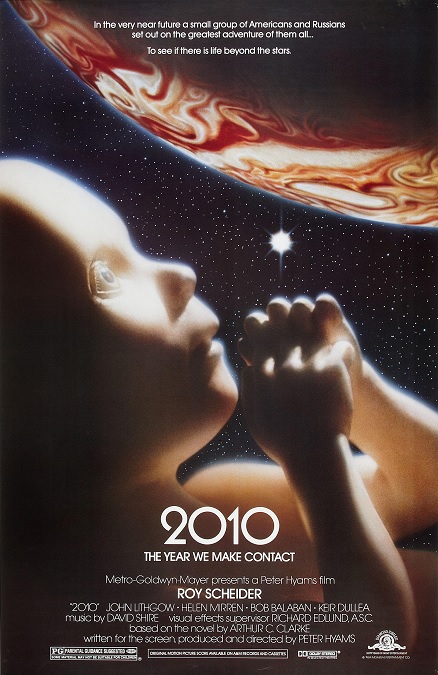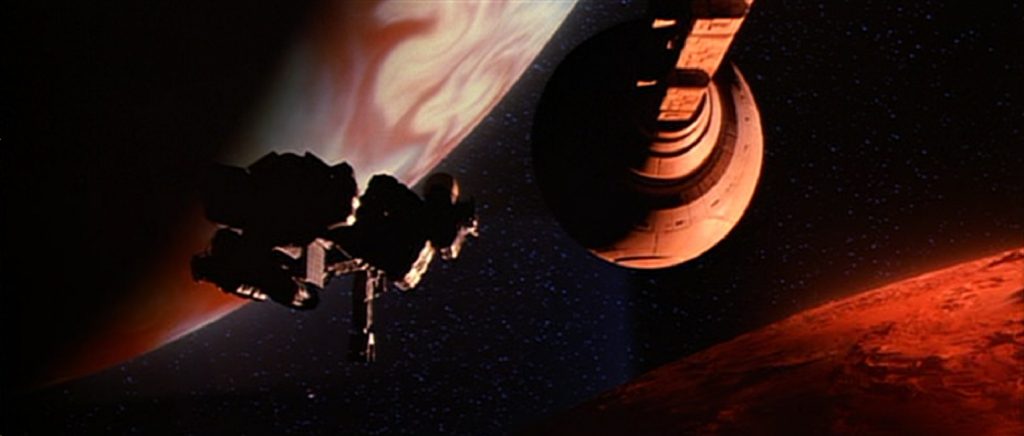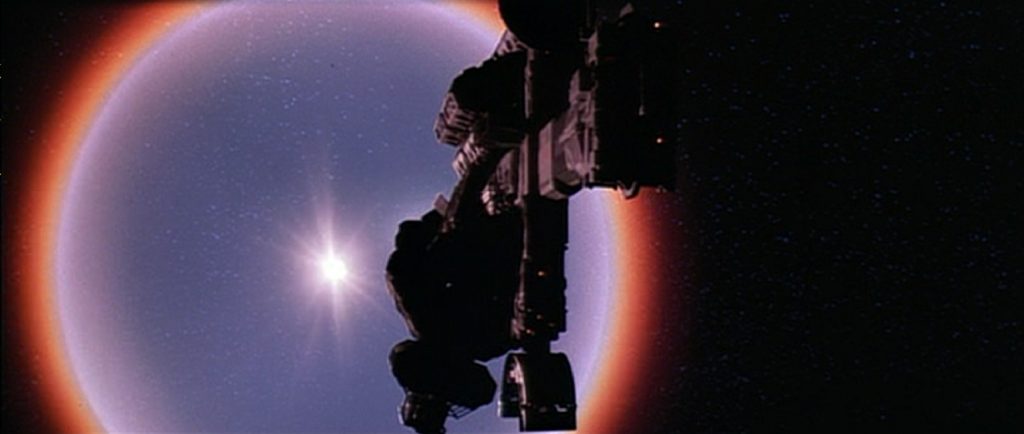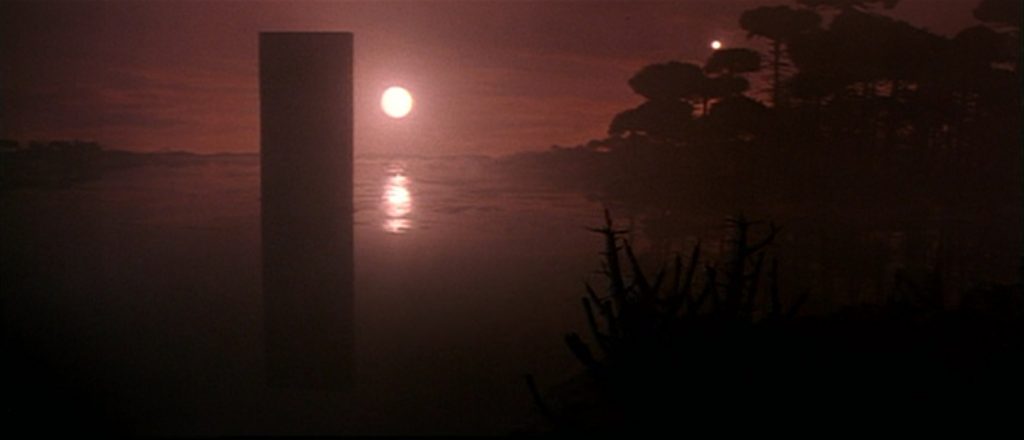



2010 The Year We Make Contact – 1984

There was nothing wrong with the visual effects for this film, but I’ll say right off the bat, I think I know why it didn’t win the Oscar. As simplistic as it sounds, they just weren’t very flashy. They were done very well, but the filmmakers did their best to make everything factual and realistic. And let’s face it. Reality isn’t always very flashy. But on the flip side, I also think I know why it received its nomination. This is one of the first times that CGI was effectively used.
Now, granted, CGI was still in its infancy, and it was only used for a short sequence, but it was done well and looked pretty cool. There is a scene in which a space ship must perform a risky aero-breaking maneuver by entering Jupiter’s gravity and sling-shotting themselves around the planet’s dark side, and settling into an orbit around Europa. All the dense clouds on the dark side of Jupiter were CGI and they looked pretty cool! That being said, I also really liked the shots of Jupiter’s light side. The roiling bands of color looked sharp and very realistic.
But as far as I read, there was only one other shot in the film that used the new computer-generated visuals. There was a shot of millions of monoliths streaming out of an interdimensional hole that had opened up in the gas giant. However, aside from those two things, everything else still relied on practical effects. There were a number of shots of large and slow-moving ships, and slow-moving astronauts and cosmonauts. In fact, everything was pretty slow-moving.
However, there were several other effects in the film that caught my attention that are worth mentioning. For example, they got the same actor who played David Bowman in 2001 A Space Odyssey, Keir Duella, to reprise his role. He didn’t look like he had aged a day, despite the fact that the movies were filmed sixteen years apart. Now granted, 2010 was nominated for Best Makeup, but they created the illusion that he hadn’t aged at all in sixteen years, and I call that a visual effect. Also, Stanley Kubrick destroyed all the miniature models and schematics from his original film. They had to recreate Discovery One by studying the film footage.
Also, there was that whole air-breaking sequence. Aside from the competent CGI elements, the flames that surrounded the ship because of the friction with the Jovian atmosphere were pretty cool, making it look like an oblong fireball hurtling through space. And then there was the film’s climax. Jupiter basically imploded and turned into a new star in our solar system. The shockwaves that emanated from the event were also pretty competently portrayed. After that, we are treated to scenes from around the Earth which showed a sky that contained two suns. Those were some interesting, though brief, shots.
But unfortunately, 2010’s slow visual effects just weren’t very flashy. The space travel effects were just too subtle, leaning more towards reality than fantasy. The mystery and intrigue of the film resided more in the plot than in the visuals. That doesn’t mean the visuals were bad, but they were outshined by their competitors.